Comm. Rosenworcel on Hiring FCC Engineers
She made 5 predictions:
- Clearing more federal spectrum will be slow going unless we provide federal authorities with incentives to relocate.
- We will need to look high and look low to find spectrum for next generation wireless networks.
- Spectrum use will become more efficient if we challenge ourselves.
- We need more Wi-Fi.
- The government will do a better job of fostering innovation with an infusion of young engineers.
Readers will recall that the issue of FCC hiring of engineers and the difference between lawyer recruiting and engineering recruiting has been a recurring topic here. So it was gratifying to hear that the commissioner has very similar thoughts on engineering hiring at FCC as your blogger. We hope that others indicate to the 8th Floor support for Comm. Rosenworcel’s viewpoints for the benefits of all regulated industries. Of course if you prefer that technical proceedings be dominated by lawyers and drag on forever, feel free to support the status quo.
Engineers are deployed throughout the government. At the FCC we have more than 250 of them. They are an integral part of our team, and their input is absolutely vital on spectrum policy.
But I think that across government it is time for a fresh infusion in our engineering ranks. Think of it as a new Americorps, an engineering corps that can modernize the work of government and open opportunities for innovation.
That’s big. So let me start closer to home. Over the past several years, the FCC has been able to recruit talented, young legal professionals through an honors attorney program. In fact, one of the alumni of this program—David Goldman—works in my office and is just the kind of professional we want to recruit to public service.
I think the program that brought David to the FCC needs an engineering counterpart. So I think we should create an honors program for young engineers. It would bring new vigor to the ranks of our technical experts. By mixing young men—and women—with experienced engineers already on staff, the FCC could be better prepared to face the challenges of next-generation communications networks.
Sen. Fischer Introduces S. 2817 to Urge FCC Compliance with Section 7
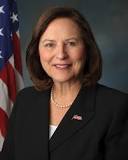
Section 7, passed over 30 years ago is brief:
(a) It shall be the policy of the United States to encourage the provision of new technologies and services to the public. Any person or party (other than the Commission) who opposes a new technology or service proposed to be permitted under this chapter shall have the burden to demonstrate that such proposal is inconsistent with the public interest.
(b) The Commission shall determine whether any new technology or service proposed in a petition or application is in the public interest within one year after such petition or application is filed. If the Commission initiates its own proceeding for a new technology or service, such proceeding shall be completed within 12 months after it is initiated.
It basically puts the burden of proof on those who oppose new technology and sets a schedule for deliberations on new technology, FCC has consistently ignored both provisions.
Sen. Fischer’s bill assigns 2 new functions to the FCC Office of Strategic Planning and Policy Analysis
(A) take steps to ensure that the Commission complies with each deadline under subsection (b) (of section 7);
(B) review each regulation proposed by the Commission and analyze the impact of the regulation on innovation, economic growth, andjob creation;
Now in a well functioning agency this congressional tinkering wouldn’t be needed. But there is something in the FCC’s hidebound culture under both parties that has resulted in a 30 year consistent avoidance of Section 7.
Let’s not be naive: a junior senator from the minority party in the Senate without cosponsors is not going to change FCC’s long habit of ignoring this provision of its statute. But maybe she will get more attention than an obscure spectrum blogger! Maybe she can get FCC to explain why it continues to ignore this part of its statute?
Section 7 is not a perfect piece of legislation as presently written. But if FCC doesn’t like it, why hasn’t it proposed any changes in 30 years?
Cell Phone Spying & FCC
Today’s Washington Post had an article entitled “Tech firm tries to pull back curtain on surveillance efforts in Washington”. The above video was part of the article on their web page.
The article discussed the apparent proliferation of “IMSI catchers” in the DC area. It explains
“Known as IMSI catchers, for the unique identifying phone code called an IMSI, the surveillance devices trick mobile phones into thinking they have logged onto legitimate cell networks, such as Verizon or AT&T, when in fact the signals have been hijacked.
For years, researchers have warned of the growing prevalence of the equipment, and Turner said the spygear is rife throughout the Washington area.
In August the Post reported that FCC has been asked by Rep. Grayson to look into allegations that FCC had long known about cellular network vulnerabilities to such privacy invasions.
YOur blogger was particularly troubled by the statement in today’s Post article that said: “It does not have authority, FCC officials say, over government use of this surveillance technology.” Presumably “government” in this context meant “federal government” because clearly FCC has authority over state and local governments with repeat to use of radio transmitters. But even in the case of the the federal government, FCC is not without power. While a straightforward reading of the Communications Act of 1934 gives parallel and independent authority for regulating transmitters to FCC under § 301 and the President for federal users under § 305, since the 1940s the agency administering the President’s § 305 authority, now NTIA, and FCC have had a written understanding that they would seek consent of the other for transmitters in bands where that might impact the transmitters authorized by the other party. The current agreement is here.
In practice, this agreement is rigorously adhered to. So it is inconceivable that NTIA would authorize FBI or some other “3 letter agency” to use a “IMSI catcher” that included a transmitter without informing FCC and seeking “coordination”. This does not involve a vote by the commissioners and is a fairly routine action normally handled within OET. Did the “8th Floor” know about such a request from NTIA? I have no idea. But I am certain that no agency would have taken such action without seeking NTIA authorization and that NTIA would not have given such authorization without seeking some level of approval from FCC.
This the unnamed FCC ”officials” quoted above either didn’t know what they was talking about or were intentionally misleading.
UPDATE
DC News FOX 5 DC WTTG
DC’s Fox station on “fake towers” in DC: Tech company finds mysterious fake cell towers in DC area
Sprint Drive First: Kudos to Sprint for New Safety App

.Shortly after the car exceeds 10 mph – determined using GPS and cell tower triangulation – the mobile phone will be locked. If the driver is using the phone when Sprint Drive First engages, the call will end and the phone lock screen will appear. Anyone texting the driver will receive an automated message indicating the person they texted is driving. The message is customizable by the account holder.
A locked device displays a home screen with exit and emergency 911 buttons to override the app. Sprint Drive First can be overridden if the user is a passenger in a car, on a bus or train, but the parent or account holder can choose to receive notifications when the service is overridden.
Parents have a choice of programming up to five phone numbers to ring through when the phone is locked as well as allowing functionality of three apps, such as navigation, music or weather.
When the application no longer detects movement it unlocks and full device functionality resumes. Sprint Drive First takes into account stop-and-go traffic, so the driver needs to be sitting idle for a few minutes before it will unlock
Beginning of Wi-Fi Privacy-Related Electronic Warfare
In a previous post we wrote about the jamming threat to Wi-Fi and cellular that may come from unrestricted access by private drones to their spectrum. Today, a CNN post provocatively entitled “This gadget can knock drones and Google Glass offline” describes a device called the “Cyborg Unplug”. Its maker describes it as
Cyborg Unplug is a wireless anti-surveillance system for the home and workplace. 'Plug to Unplug', it detects and kicks devices known to pose a risk to personal privacy from your local wireless network, breaking uploads and streams. Detected devices currently include: Google Glass, Dropcam, small drones/copters, wireless 'spy' microphones and various other network-dependent surveillance devices.
Cyborg Unplug comes hot on the heels of glasshole.sh, a script written by Julian Oliver to detect and disconnect Google's Glass device from a locally owned and administered network. Following broad coverage in the press, the script struck a chord with countless people all over the world that felt either frustrated or threatened by the growing use and abuse of covert, camera-enabled computer technology.
Whether business office, restaurant, school or nightclub: it's your territory and your rules, so make it harder for those that seek to abuse it.
The maker describes the 2 modes of the device:
Cyborg Unplug can be operated in two modes. The recommended mode is Territory Mode, disconnecting target devices from selected network(s) owned and operated by the user. The other mode is All Out Mode, which disconnects all detected target devices from any network they are associated with, including paired connections with smartphones. Please note that this latter mode may not be legal within your jurisdiction. We take no responsibility for the trouble you get yourself into if you choose to deploy your Cyborg Unplug in this mode.
We will not parse here US rules and regulations about whether this is illegal. Nor will we speculate on whether it will actually work as advertised. This new product and its website and PR campaign shows the pent up demand for privacy protecting devices. If this device becomes popular, explicitly illegal Wi-Fi jammer manufacturers probably will go after the same market and a whole cycle of electronic warfare will begin.
The Wi-Fi industry and cellular industry should do some soul searching about whether their nonchalant attitude towards privacy invading uses of their technology contributes to supply and demand issues for jammer-like devices. Your blogger was once involved in electronic warfare issues decades ago. He does not want these to come to the dynamic civil communications systems that contribute so much to our society and economy.
Once Pandora’s Box is fully open, large NALs to mysterious Chinese companies will really have no impact.
Leaders of the Wi-Fi and cellular industries: Are there actions your industries are taking or trends which you are ignoring that are stimulating the demand for jammers? Will addressing these issue within your industries be more effective than relying on the currently underfunded FCC to solve severe problems that are likely beyond its resources if they take hold?
NSA's STELLAR WIND Program: What Did FCC Know and When?
The above section of a memo from the DOJ Office of Legal Counsel is authorization for unprecedented data collection of communications by NSA. There are actually 2 memos: A 76 page May 2004 memo and a 9 page July 2004 memo. Did FCC see these memos or participate in their drafting? There is no public documentary evidence that FCC was involved. However, these memos authorize unprecedented activities by FCC-regulated carriers to cooperate with NSA. Based on my experience it is unlikely that the major carriers would have participated unless they had some indication from FCC, perhaps a nod at a meeting, not necessarily a memo.
While the DOJ IG is limited in his authority to investigate “intelligence or counterintelligence matters; or) other matters the disclosure of which would constitute a serious threat to national security.” under the terms of 5 USC App. 8E, the FCC IG is under no such statutory limitation.
So
- Did the FCC Chairman know about STELLAR WIND and the DOJ opinions?
- Did the other FCC commissioners know about these?
- Did FCC communicate in some way to the major carriers that they should cooperate with NSA?
- Did it occur to the FCC IG to wonder if these were legal?
- As an independent agency was it proper for FCC, if it knew, to question the legality?
Fred Korematsu being awarded the
Presidential Medal of Freedom in 1998
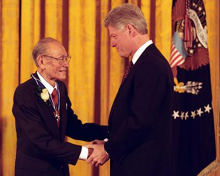
Fly and Sterling had the moral courage to question a wartime national security issue within the FCC’s jurisdiction and competence. Did the early Bush 43-era FCC have similar moral courage?
Chmn. Wheeler's Speech on Broadband Competition: What Isn't Said About Spectrum Implications
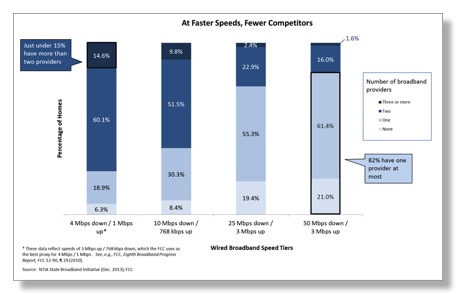
Yesterday, Chairman Wheeler gave a talk entitled The Facts and Future of Broadband Competition” in DC where the above diagram comes from. He introduced the speech as follows:
I want to discuss how the growing bandwidth demands of businesses and consumers are changing the competitive broadband landscape. My goal is not to criticize, but to recognize that meaningful competition for high-speed wired broadband is lacking and Americans need more competitive choices for faster and better Internet connections, both to take advantage of today’s new services, and to incentivize the development of tomorrow’s innovations.
He only uses the word “spectrum” 3 times, on p. 6, in the whole talk:
.Second, where greater competition can exist, we will encourage it. Again, a good example comes from wireless broadband. The “reserve”spectrum in the Broadcast Incentive Auction will provide opportunities for wireless providers to gain access to important low-band spectrum that could enhance their ability to compete. Similarly, the entire Open Internet proceeding is about ensuring that the Internet remains free from barriers erected by last-mile providers.
Third, where meaningful competition is not available, the Commission will work to create it. For instance, our efforts to expand the amount of unlicensed spectrum creates alternative competitive pathways. And we understand the petitions from two communities asking us to pre-empt state laws against citizen-driven broadband expansion to be in the same category, which is why we are looking at that question so closely
We agree with everything he says, but what is telling is what is not said.
The text has the sentence “Today, a majority of American homes have access to 100 Mbps.” This compares well with the statement on p. 9 of the National Broadband Plan (NBP) that “As a milestone, by 2015, 100 million U.S. homes should have affordable access to actual download speeds of 50 Mbps and actual upload speeds of 20 Mbps.” (For reference, Census reports that there are 115,226,802 households in the USA.) Thus at least 57 million homes have access to 100 Mbps, although not necessarily affordable access.
NBP goes on to say
GOAL NO. 3: Every american should have affordable access to robust broadband service, and the means and skills to subscribe if they so choose.
Today’s FCC definition of “broadband” is 4 Mbps which Wheeler calls appropriately “yesterday’s broadband”. He goes on to say, echoing NBP
“high-speed connections are crucial not only for the kind of innovation that will educate our children and deliver quality health care, but also improve energy efficiency, fill the employment ranks, and maintain the United States as the world’s innovation leader for the 21st Century.”
Inside sources tell us that early drafts of NBP mention the impact of this on spectrum: If everyone in the US had access to broadband, even 25 Mbps - already, according to the Chairman on p. 3, 80% have access at some price - why would we the need over the air (OTA) DTV in urbanized areas? The motive for introducing universal broadband is NOT to replace OTA DTV, but rather to move our economy and society forward.
Readers may recall our January 2012 piece on Justice Alito’s comment on OTA DTV during oral arguments:
Unfortunately FCC commissioners are not allowed to make such comments publicly for fear of offending NAB. They even stripped the topic out of the NBP after an early draft leaked to broadcast interests (apparently from 8th Floor sources) and they started getting calls from Congress.
Note that we are not necessarily advocating moving more spectrum from broadcasting to cellular, rather we are saying that the large broadcasting allocations will become more and more untenable as a matter of public policy as broadband penetration increases. This could be accelerated if “free TV” for lower income households could be replaced through freemium basic cable-like service over Internet. All household would be better off with effective broadband. Pumping hundreds of thousands of watts of RF power over several MHz from large transmitter towers in order to qualify for retransmission consent or must-carry could become “so 20th century”! We do not wish the financial demise of the NAB membership, the incentive auction gives them one way to monetize their long term investment.
Your blogger joined FCC spectrum management 35 years ago this month. The world of spectrum use has change considerably in those 35 years with cellular, impact of cellular frequency reuse permitting spectrum productivity that seemed impossible, the upper band of permitted spectrum at 95 GHz, spectrum efficiencies that exceed 1 bps/Hz, DTV, etc. The increasing concentration of spectrum in cellular companies may not be optimal for our society and economy with respect to new spectrum needs we do not understand today just as in 1979 FCC did not appreciate what was coming, e.g. Part 90 was seen as needing much more spectrum then.
While we think that the military needs to be more flexible about its spectrum needs and sharing with the private sector, the US has the largest and most information intensive military in the world and recent events show that for the foreseeable future we face more national security threats that most countries represented in 3GPP. Thus while we may be able to downside or eliminate the need for OTA DTV as broadband penetration reaches new goals, we should not necessarily hand over the spectrum in a way that can not be readily reversed to systems designed in 3GPP for other markets.
NAB should not be able to veto dialogue on the spectrum impacts of broadband penetration just as CTIA should not be able to demand every Hz that “isn’t nailed down”.
UPDATE
As if on cue, the day after this was posted, our home town newspaper had an article entitled “TV is increasingly for old people”. The beginning of the article stated:
The median age of a broadcast or cable television viewer during the 2013-2014 TV season was 44.4 years old, a 6 percent increase in age from four years earlier. Audiences for the major broadcast network shows are much older and aging even faster, with a median age of 53.9 years old, up 7 percent from four years ago.
These television viewers are aging faster than the U.S. population, Nathanson points out. The median age in the U.S. was 37.2, according to the U.S. Census, a figure that increased 1.9 percent over a decade. So to put that in context of television viewing, he said TV audiences aged 5 percent faster than the average American.
Of the networks, Fox has the youngest average viewer age at 47.8 years while CBS has the oldest at 58.7 years. Broadcasting & Cable, the industry’s cheerleader published a similar article on the new data.
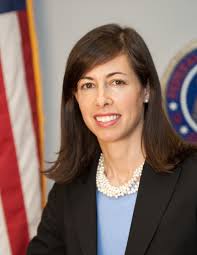
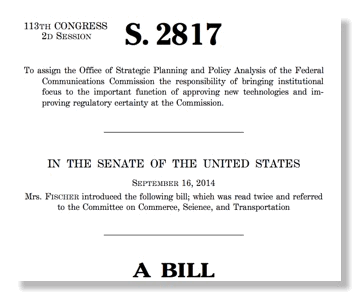
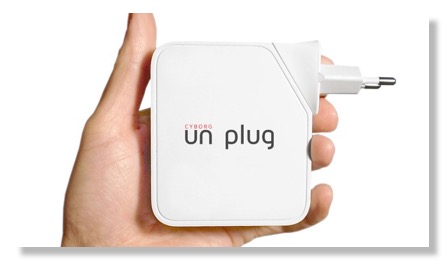
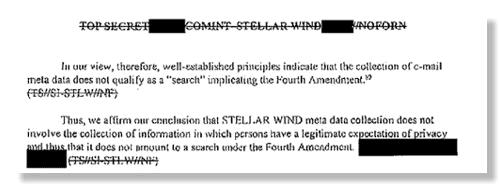
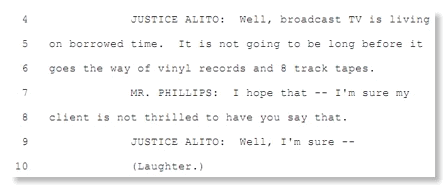


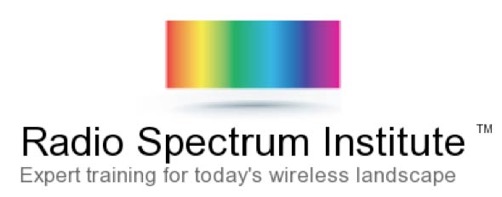


![Validate my RSS feed [Valid RSS]](valid-rss-rogers.png)

